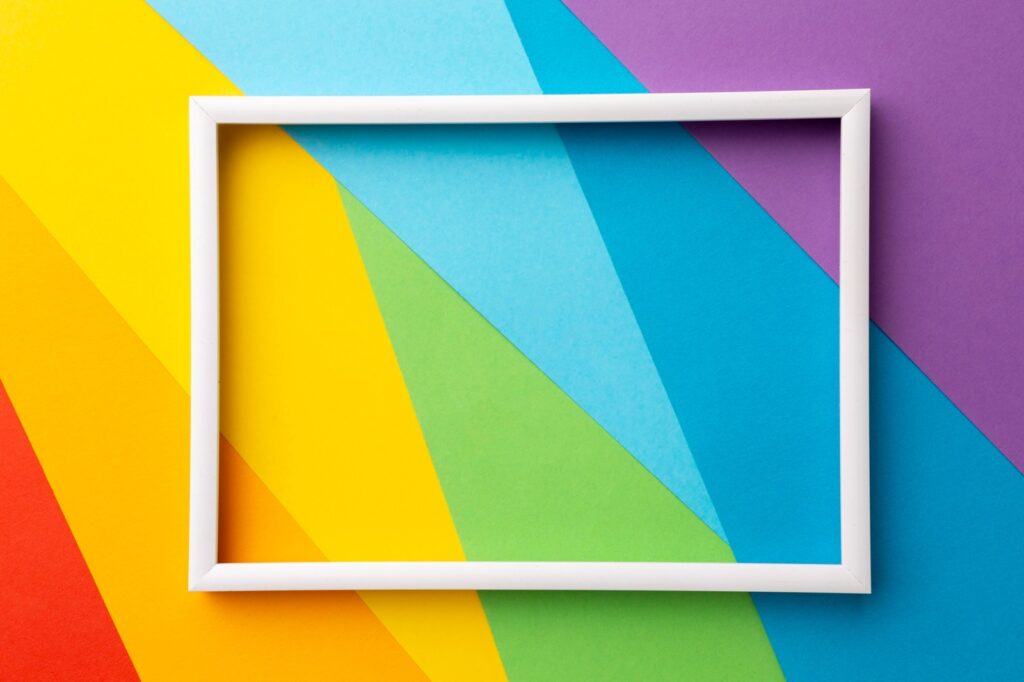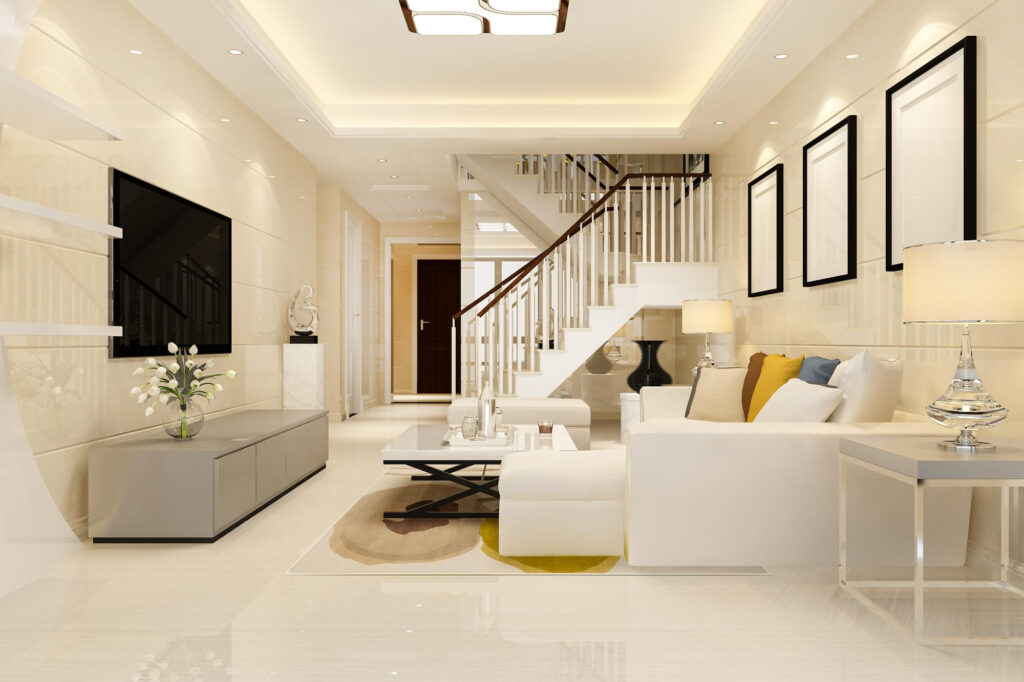In the realm of picture framing, frames transcend mere protective edges; they become intrinsic components of artwork presentation. The significance of selecting the right frame extends beyond safeguarding the art; it lies in its ability to accentuate the artwork’s inherent beauty, providing depth and context. Within this context, color psychology emerges as more than a captivating subject—it emerges as a potent tool capable of profoundly influencing our moods, emotions, and decision-making processes. In this exploration, we delve deep into the application of color psychology in picture framing, harnessing its power to enhance both art and décor, eliciting desired emotional responses from viewers while enriching the overall aesthetic experience.
Key Takeaways:
- Frames play a vital role in art presentation, enhancing beauty and context.
- Color psychology in framing influences mood, perception, and viewer response.
- Strategic color selection enhances emotional impact and visual harmony.
This tool becomes especially potent in the realms of art and decor, where the right colors can transform a space or a piece of art from something ordinary into something extraordinary.
The Basics of Color Psychology
Color psychology explores how different colors influence human behavior and emotions. It’s why a blue room can feel calming, while a red accent can energize a space. Understanding this psychological impact is crucial for artists, decorators, and anyone looking to create a specific ambiance in their space.
Color psychology is the study of hues as a determinant of human behavior. Colors can evoke certain emotions, affect mood, and even influence decisions. Here, we’ll break down the basics, from warm tones that energize and uplift to cool shades that calm and soothe.
The Influence of Color Psychology in Picture Framing
“Now, let’s shift our focus to picture framing and explore how Color Psychology in Picture Framing comes into play in this essential aspect of visual presentation. Picture frames serve not only as protective enclosures for artworks but also as visual extensions of the pieces they hold. The color, style, and material of a frame can significantly impact the overall perception of the artwork it surrounds.”
Setting the Mood
Picture framing act as a bridge between the artwork and its environment, setting the tone for the viewing experience. For instance, a bold, vibrant frame can inject energy and dynamism into a photograph, making it stand out in a lively, contemporary setting. Conversely, a classic, understated frame in neutral tones may complement a traditional painting, imparting a sense of elegance and timelessness.
Enhancing Visual Harmony
In addition to setting the mood, the right frame can enhance the visual harmony between the artwork and its surroundings. By carefully selecting colors that complement or contrast with the predominant hues in the Color Psychology in Picture Framing, you can create a cohesive and visually striking display. For example, a frame that echoes the colors of the artwork’s focal point can draw the viewer’s eye inward, enhancing its impact and creating a sense of unity.
Evoking Emotional Responses
Perhaps most importantly, picture framing can evoke specific emotional responses in viewers through the strategic use of color. Whether consciously or subconsciously, the colors surrounding an artwork can influence the viewer’s mood, perception, and interpretation of the piece. By choosing frames that align with the desired emotional tone of the artwork, you can amplify its expressive power and create a more immersive viewing experience.
Colors and Their Meanings
Colors have cultural meanings and symbolism that affect how people perceive and understand things in various circumstances and societies. When choosing frames, it is critical to comprehend the cultural meanings attached to different hues in order to guarantee that the show will appeal to a wide range of viewers.
Each color carries its own set of emotions and meanings. Let’s explore a few:
- Red: A color of passion and energy, red can elevate a room’s energy levels and evoke strong emotions.
- Blue: Known for its calming and serene effects, blue is perfect for creating a peaceful environment.
- Yellow: This cheerful color can brighten up spaces, promoting happiness and alertness.
Warm vs. Cool Tones
Warm tones like red, orange, and yellow are great for adding warmth and vibrancy to artwork displays because they radiate vigor, enthusiasm, and optimism. Cool tones, on the other hand, such as blues, greens, and purples, encourage reflection, peacefulness, and serenity, which gives framed pieces a feeling of peace.
Personal Preferences
When choosing colors for picture frames, people’s psychological tendencies and personal preferences are crucial considerations. Matching frame colors to one’s own aesthetic preferences, whether one is drawn to bright and vibrant colors or soft and subdued tones, improves emotional connection and enjoyment.
Applying Color Psychology in Framing
Selecting the right frame color can enhance the artwork’s impact, complementing or contrasting the hues within the piece to provoke specific feelings.
- Choosing the Right Frame Color: Consider the artwork’s dominant colors and the emotions you wish to evoke. A contrasting frame can make the art pop, while a complementary frame can create a harmonious look. Consider the artwork’s dominant colors, the room’s color scheme, and the emotional ambiance you aim to create. Here, we’ll guide you through harmonizing or contrasting frame colors with your decor for maximum impact.
- The Impact of Frame Color on Perception: The color of a frame can change how we perceive the art it surrounds, influencing its visual appeal and the emotions it evokes.
Maximizing Visual Impact Through Strategic Picture Framing
The Power of Color Selection
Choosing the right colors for framing is more than just a matter of aesthetics; it’s about tapping into the subconscious reactions that different colors evoke. From bold reds to serene blues, each color carries its own psychological associations, which can profoundly impact viewer perceptions.
Red: Energizing and Attention-Grabbing
Red is a powerful color that commands attention and evokes strong emotions. When used in framing, it can create a sense of urgency or excitement, making it ideal for highlighting important information or calls to action.
Blue: Trustworthy and Calming
Blue is often associated with trust, reliability, and tranquility. Incorporating blue into your frames can instill a sense of confidence and security in viewers, making it particularly effective for professional or institutional settings.
Green: Refreshing and Harmonious
Green symbolizes growth, renewal, and balance. Using green in framing can evoke feelings of harmony and freshness, making it suitable for environmental, health, or wellness-related content.
Yellow: Optimistic and Attention-Grabbing
Yellow is the color of sunshine and optimism. It can grab attention and convey a sense of positivity and cheerfulness, making it a great choice for promotional or inspirational picture framing.
Black: Sophisticated and Authoritative
Black exudes sophistication, elegance, and authority. Incorporating black into frames can add a sense of gravitas and seriousness, making it suitable for luxury brands or formal communications.
White: Clean and Minimalistic
White signifies purity, simplicity, and clarity. Using white frames can create a clean and minimalist aesthetic, allowing content to stand out without distractions.
Leveraging Color Contrast
In addition to individual color psychology, the contrast between different colors within a frame also plays a crucial role in visual perception. Understanding how colors interact and complement each other can help create visually engaging and dynamic frames.
Enhancing Emotional Impact
Beyond their individual psychological associations, colors can also evoke specific emotions when used in combination with frames. By strategically combining colors, designers can amplify emotional responses and create memorable visual experiences for viewers.
Contrast and Emphasis
The artwork’s color and the frame’s contrast draw attention to specific areas, directing the viewer’s eye and highlighting important compositional components. Strategic contrast draws the eye in and guarantees that the piece of art stands out from its surroundings.
Complementary Combinations
By using complementary color schemes for the artwork and frame, the display’s overall impact is increased through dynamic visual interactions. People can produce eye-catching contrasts that enhance the visibility of the artwork by contrasting colors that are opposite one another on the color wheel.
Mood Enhancement
Using frame colors to create particular ambiances or moods enhances the storytelling potential of art exhibits. Choosing frames that complement the intended mood—be it enthusiasm, nostalgia, or calm—improves the artwork’s emotional impact.
Practical Tips for Incorporating Color Psychology into Framing
Consider Your Audience
Before selecting colors for picture framing, consider the demographics, preferences, and cultural backgrounds of your target audience. Tailoring your color choices to resonate with your audience can enhance the effectiveness of your frames.
Test and Iterate
Don’t be afraid to experiment with different color combinations and framing techniques. Conduct A/B testing or gather feedback from focus groups to determine which frames resonate most effectively with your audience.
Maintain Consistency
Consistency is key to establishing a cohesive visual identity. Choose a color palette that aligns with your brand or message and use it consistently across all your framing materials to reinforce brand recognition and trust.
Keep Accessibility in Mind
Ensure that your frames are accessible to all individuals, including those with color vision deficiencies. Avoid relying solely on color to convey information and incorporate other visual cues, such as text labels or icons, to enhance clarity.
Assessing Your Space and Artwork
Evaluate the lighting, wall color, and room style. Is your artwork vibrant and bold, or soft and subdued? The frame should complement both the art and the space it inhabits.
- Monochromatic: A single color in varying shades offers a cohesive look.
- Complementary: Opposite colors on the color wheel enhance each other’s vibrancy.
- Analogous: Adjacent colors on the color wheel create a harmonious and serene atmosphere.
The Impact of Frame Material and Texture
Beyond color, the material and texture of a frame can add another layer of psychological effect. Wood frames bring warmth and natural vibes, while metal frames offer a sleek, modern feel.
Color Psychology in Home Decor
Applying color psychology goes beyond art and into the realm of home decor, where the right colors can create a tailored atmosphere.
- Living Room: Opt for welcoming colors like warm earth tones or soft blues and greens.
- Bedroom: Use relaxing colors, such as soft lavender or pale blue, to promote tranquility.
- Kitchen: Energizing colors like yellow or orange can stimulate appetite and conversation.
Conclusion
Embracing color psychology in picture framing is about more than aesthetics; it’s a journey into the heart of your personal or shared spaces. By thoughtfully selecting frame colors that resonate with the artwork and the environment, you create a harmonious and emotionally resonant experience for all who enter.
Frequently Asked Questions (FAQs)
Can the color of a frame affect the room’s mood?
Absolutely! Just as wall color can influence a room’s atmosphere, so can the color of your frames. A well-chosen frame color can complement the room’s ambiance, enhancing its intended mood.
How do I choose the right frame color for my artwork?
Consider the dominant colors in your artwork, the room’s color scheme, and the emotional impact you’re aiming for. Experiment with complementary or contrasting colors for different effects.
Does frame material matter as much as color?
Yes, the material can significantly affect the artwork’s presentation and the room’s feel. Wood frames can add warmth and rustic charm, while metal frames can create a more contemporary or industrial look.
How does color selection affect framing?
Colors in framing can impact viewer perception and interaction, evoking emotions or conveying messages. Selecting the right colors enhances framing effectiveness and creates impactful communication.
Can colors impact website conversion rates?
Absolutely. The colors used on a website can influence user behavior, including click-through rates, conversion rates, and overall engagement.



